Level-Grow™ Mix - Winter Formula
A stud mix with a low glycemic formula
DESIGNED FOR:
- Use as a foal creep feed
- Maintaining weanlings and yearlings up to two and three-year-old stores
- Backward foals, without compromising skeletal development
- Larger broodmares, particularly those that can get heavy through gestation
FEATURES & BENEFITS:
- Low glycemic feed
- BMC® (Buffered Mineral Complex) for gastric health and bone development
- Chelated minerals for improved absorption
- Vistacell Live Yeast for increased nutrient digestibility
- Natural Vitamin E for increased antioxidant support
- Pack size 20KG
- Data sheet Download data sheet
Research studies have shown a relationship between the glycemic nature of feed and the incidence of skeletal disorders, such as osteochondritis dissecans (OCD) in young horses. High-glycemic feeds are those that produce a large blood glucose response post feeding, such as cereal grains and molasses. It appears that the normal bone formation processes in young horses are being disrupted by the elevated blood insulin concentrations post-feeding following the consumption of a diet rich in starch and sugars.
Due to smaller pastures and higher athletic expectations, today’s young thoroughbreds are often fed concentrate feeds that are high in starch and sugars. It is not the glucose by itself that causes the potential problems, but the resulting insulin that may affect chondrocyte maturation, leading to altered matrix metabolism and faulty mineralisation of bone. OCD lesions occur on the articular cartilage, which is the cartilage at the end of the bones that protects the joints. The skeleton starts as cartilage, so if there is a problem in the maturation of that cartilage, it can set the stage for lesions to develop. Not all young horses are affected, but some are more sensitive to high levels of glucose and insulin than others. In a study carried out by Kentucky Equine Research in 2001, a high glucose and insulin response to a concentrate meal was associated with an increased incidence of OCD.
Glycemic responses measured in the weanlings in this study were highly correlated with the glycemic index of the feed, but the bodyweight and condition of the weanling and the mare were also considered to be possible factors. Based on those results, it would be prudent to feed foals concentrates that only produce a low-glycemic response 2-4 hours after eating.
There are thought to be four basic causes of OCD, and affected horses usually have a combination of these:
- Genetic predisposition
- Rapid growth
- Nutrition and environment
- Trauma, and the role of exercise and overload
Level-Grow™ uses carefully selected ingredients like alfalfa, soya hulls and sugar beet (‘super-fibres’) that produce only a minimal glycemic response following digestion. By using this breakthrough in research, high levels of soluble carbohydrates have been replaced by fats and ‘super-fibres’ as alternative energy sources, and consequently, post weaning, Level-Grow™ would be the sole source of concentrate feed given to weanlings to carry them through to their yearling year until growth rates start to level off.
As the glycemic response of horses can be affected by the way their feed is formulated, using oil and fibre for energy rather than starch and sugar makes Level-Grow™ a ‘softer’, more forgiving feed. Backward foals can cope with the feed without compromising an immature skeleton, and mares that tend to carry too much condition during gestation respond well if they are maintained on Level-Grow™. The higher fibre level suits a larger mare that is inclined to get too heavy throughout her pregnancy, making it easier to control her bodyweight, particularly approaching foaling. The lower cereal and higher fibre levels mean that this product can be useful for yearling being prepared for sale if they don’t need too much conditioning or muscling up – it helps to keep some fillies looking more ‘feminine’ and slows down the conditioning on some colts that could get too ‘bulky’.
Stamm 30® is included in the Level-Grow™ formulations for nutrient continuity, so they contain the new ingredients called BMC® (Buffered Mineral Complex) which are research proven to support digestive health and hindgut stability by maintaining the correct pH for optimal efficiency of the gastrointestinal tract. Recent research studies conducted by KER have demonstrated the positive effects that BMC® has on bone density and the buffering capacity of the stomach and hindgut. The new calcium source in BMC® can maximise bone density, and subsequent skeletal strength and maintenance.
Ingredients
- Crushed Oats
- Soya Hulls (GM Soya)
- Lucerne Pellets
- Cane Molasses
- Soya Bean Meal (GM Soya)
- Dried Sugar Beet Pulp
- Maize Flakes
- Soya Flakes (GM Soya)
- Soya Oil (GM Soya)
- Dicalcium Phosphate
- Sunflower Seed Meal
- Maerl (calcareous marine algae)
- Wheat
- Sodium Chloride
- Calcium Carbonate
- Magnesium Oxide
- Wheatfeed
- Mixture of Flavouring Compounds
Nutrition
| Ingredient | Quantity |
|---|---|
| Protein | 14.0% |
| Oil | 6.5% |
| Fibre | 13.0% |
| Digestible Energy | 12.5 MJ/kg |
| Starch | 16.5% |
| Calcium | 1.35% |
| Phosphorus | 0.60% |
| Selenium | 0.60 mg/kg |
| Copper | 50 mg/kg |
| Zinc | 160 mg/kg |
| Vitamin A | 14,000 iu/kg |
| Vitamin D | 1,400 iu/kg |
| Vitamin E | 280 iu/kg |
| Vitamin E Natural | 70 iu/kg |
| Vitamin C | 200 mg/kg |
The feeding rates are offered as a guideline. If you would like to discuss your horse's individual requirements, please contact a member of our Nutrition Team on 01622 718487 or call the Thoroughbred Office on 01488 73456.
| Feed | Body weight | Frequency |
|---|---|---|
| Broodmares 800g-1.0 kg before foaling, 1.201.4 kg during peak lactation | per 100 kg of bodyweight | Daily |
| Youngstock 800g-1.2 kg, depending on stage of growth and season | per 100 kg of bodyweight | Daily |
| Feeding requirements will vary subject to individual needs, level of work, body condition and feed management practices. To discuss the needs of your stud or yard, please contact one of our Thoroughbred Specialists who will be able to tailor a feeding plan, taking into consideration all aspects of the diet, from forage sources to feeds and supplements. | ||
BMC® (Buffered Mineral Complex) is a natural mineral source that is high in bioavailable minerals including calcium, magnesium, boron, silicone, iodine, zinc, and manganese. BMC® is used in all of the specialist feeds in our breeding range following extensive research by Kentucky Equine Research (KER) into the positive effects on digestive health and bone development.
BMC® and Bone Development
Research into racehorses in training supplemented with Triacton, a supplement containing BMC® plus other key vitamins, was proven effective at increasing bone density after just 90 days of supplementation. Feeding Triacton increased the density of the dorsal cortex of the cannon bone by three-fold whilst also doubling bone thickness and increasing bone area.
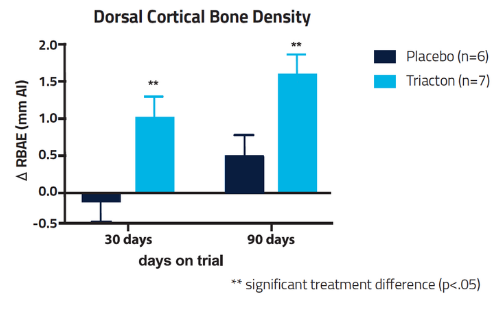
BMC® and Digestive Health
BMC® has a high buffering capacity making it an important supplement, particularly for all thoroughbreds when hard feed intake can increase and forage intake decrease. Horses on large feed intakes are more likely to suffer from gastric ulceration, but BMC® is proven to double the buffering capacity of the stomach after feeding. BMC® is present in every meal of all Saracen Thoroughbred Specialist Feeds.
The prevalence of ulcers can be high for thoroughbreds, which can result in the frequent use of omeprazole. Researchers found that omeprazole reduced calcium digestibility in mature horses by nearly 18%, but did not affect the digestibility of other nutrients. Horses routinely receiving omeprazole should have their calcium intake reviewed and may benefit from a marine-derived calcium source, which is more digestible than calcium carbonate.
BMC® also supports hindgut health through buffering acidity found within the hindgut. As thoroughbred diets generally require a higher intake of hard feed to meet elevated nutrient requirements, the risk for hindgut acidosis is higher. Changes in hindgut pH negatively affect the bacteria that reside in the hindgut and are responsible for digestion. Through helping to maintain the optimum pH for beneficial bacteria BMC® supports digestive function. BMC® is proven to increase the buffering capacity of the hindgut by 54%.

Natural Vitamin E as found in pasture has a high level of bioavailability. Natural vitamin E, also available as Nano-E™ in liquid format, is used in Saracen’s Specialist Thoroughbred Feeds to improve overall efficacy of Vitamin E in the diet. The combination of synthetic and natural vitamin E enhances the dietary effect of this important vitamin. Benefits of vitamin E include antioxidant capacity, immune function and increased IgG levels of broodmares and their colostrum.
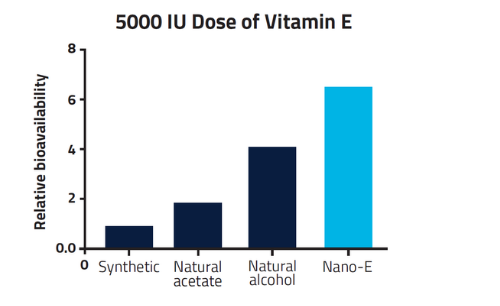
Vistacell live yeast is a proven and effective yeast specifically studied in equines. Saracen Horse Feeds contain the recommended daily intake of Vistacell yeast proven to increase digestion of both protein and fibre. The markers ADF and NDF relate to various fibrous components found within the plant cells of both grains and forages. Increasing digestion of protein and fibre directly benefits the health and performance of all horses at every stage of breeding, growth and development.
Other specialist products
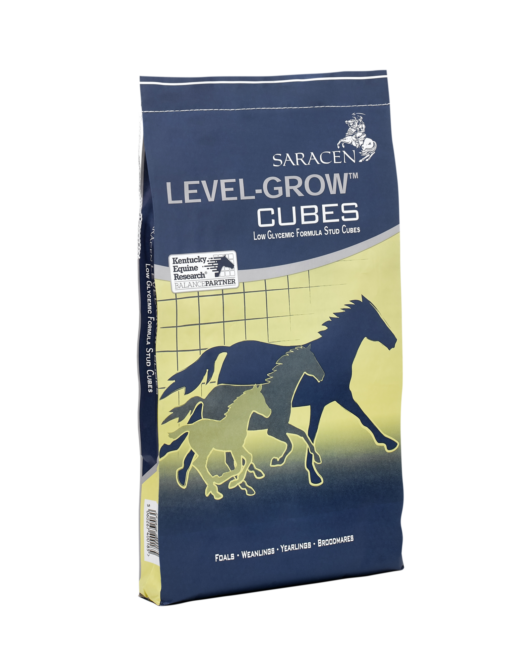

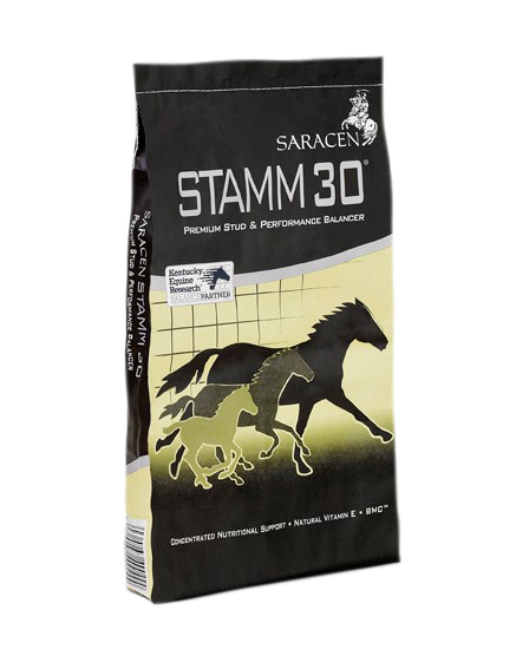
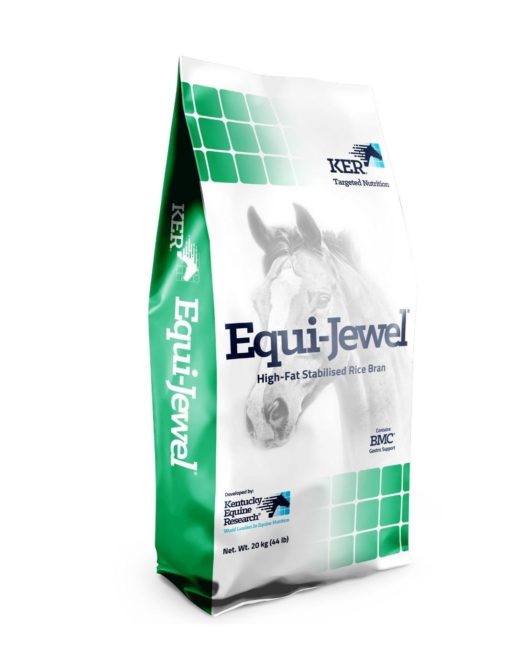
Level-Grow™ Cubes - Winter Formula
Triacton®
Stamm 30® Balancer
Equi-Jewel®
Find a stockist nearby
Enter your postcode to find your nearest stockist to enquire about this product.
Contact us
For Information on how to purchase this product, please get in touch with a member of our team.
Stay up-to-date
Keep up-to-date with all of our news & offers. Sign up to our newsletter here















